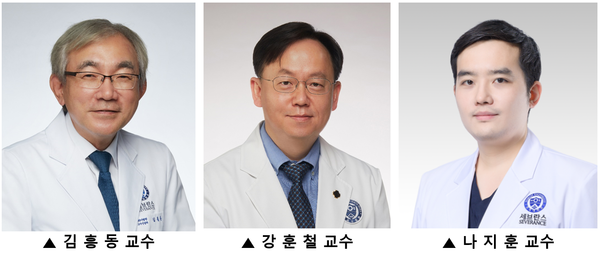Gangnam Severance Hospital said on Monday that it was possible to control long-term convulsions and improve cognitive development in Lennox-Gastaut syndrome (LGS) patients after sequentially applying various therapies.

LGS is an intractable epilepsy with various causes of brain structural abnormalities and genetic abnormalities, which does not respond effectively to any treatment. LGS causes life-threatening severe convulsions as well as severe cognitive decline.
Patients with LGS has a characteristic brainwave form called generalized slow spike and slow wave (GSSW) and generalized paroxysmal fast activities (GPFA), which have many effects on refractory spasms and cognitive decline.
Treatment includes medication such as anticonvulsants, a ketogenic diet that reduces spasms through metabolic changes by making ketones, and surgery for epilepsy. Epilepsy surgery is divided into ablation surgery, when the area causing the epilepsy can be clearly identified, and palliative surgery to reduce the frequency and intensity of convulsions when the causative site is not obvious.
Accordingly, the research team actively conducted various treatments sequentially to evaluate the effects such as reduced convulsions and improved cognitive development, and followed up long-term prognosis.
First, they investigated 371 patients treated at Gangnam Severance Hospital from 2004 to 2019 for changes in spasms for more than one year and more than five years to investigate the prognosis of each treatment.
Differences in electroencephalogram findings in patients with LGS before and after treatment.
Th results showed that 168 patients or 45.3 percent had no convulsions for more than a year. Among these patients, 61 or 16.5 percent remained seizure free for more than 5 years.
Additionally, both the seizure-free-for-1-year and remained-seizure-free groups showed significant improvement in electroencephalography findings and neurodevelopmental status following treatment.
In the group of patients who had no convulsions for more than a year, 73 percent of the patients showed improved brain waves. In the same study group, the rate of severe cognitive development decreased from 51 percent to 34 percent.
"This study will be very helpful in establishing a treatment strategy for this intractable disease called Lennox-Gastaut Syndrome," Professor Na Ji-hoon, the first author of the paper, said, "We revealed that analyzing the 15-year-long disease prognosis and applying various treatments sequentially are ways to overcome LGS."
The results were published in the international journal, Therapeutic Advances in Neurological Disorders.

